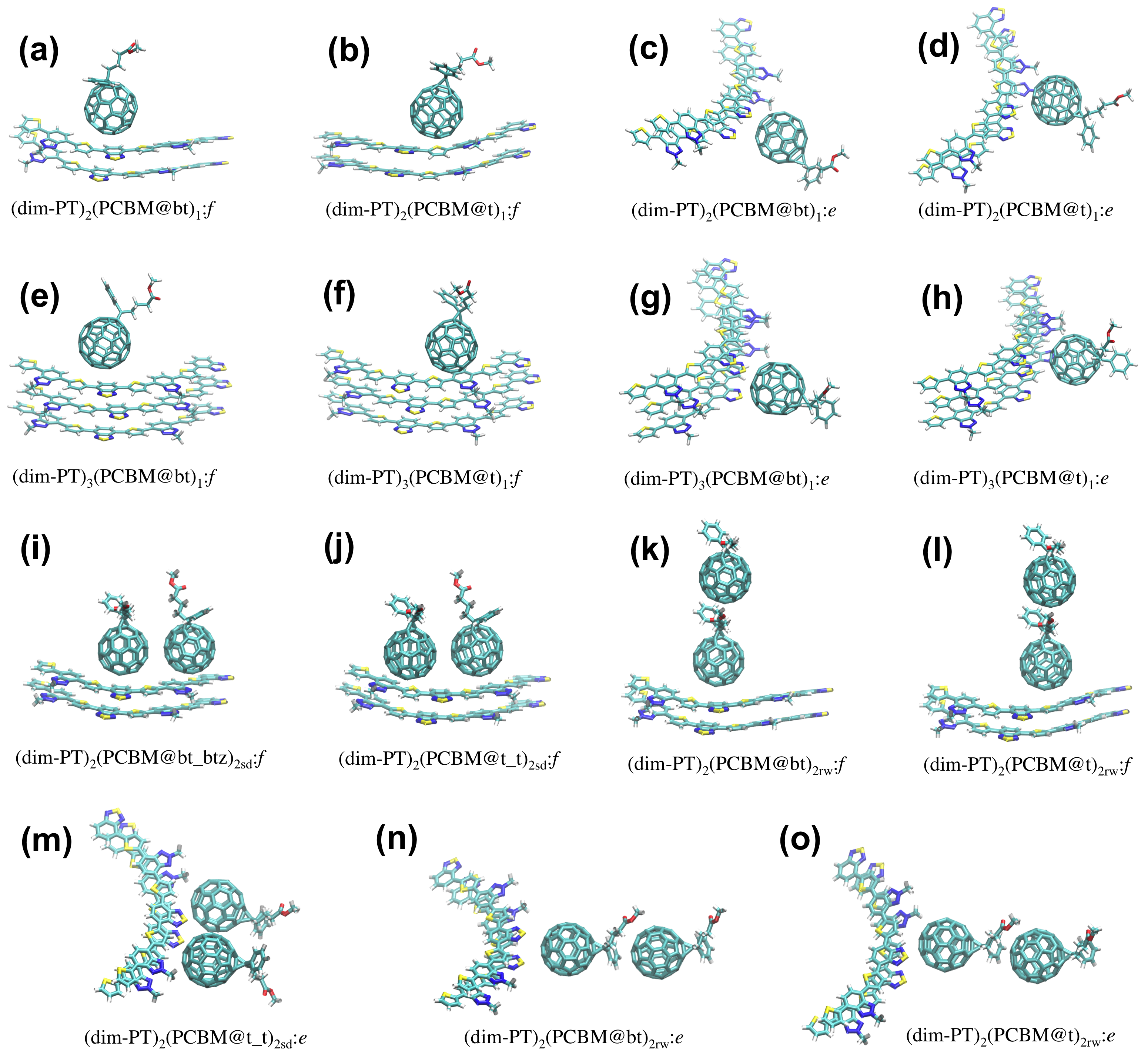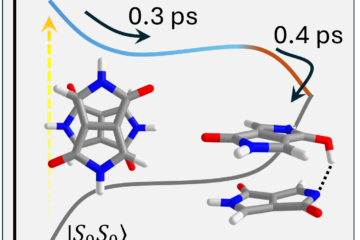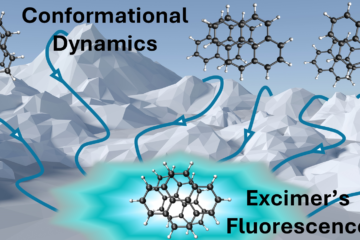Simulations show how to control charge separation from hot or cold excitons.
In brief:
- We analyzed 17 model interfaces changing the number, position, and orientation of the donor and acceptor molecules.
- Models with face-on orientation favor dissociation from hot excitons, while edge-on models favor dissociation following relaxation to cold CT states.
- These results were obtained through quantum-chemical simulations using TD-LC-DFTB.
In an international collaboration led by Marcio Varella, we have characterized the size, density, and distribution of charge transfer (CT) excitons as a function of the acceptor-donor architecture of prototypical organic interfaces. This characterization was done by computational analysis of 17 models (15 of them are shown in the figure below), changing the number, position, and orientation of the donor and acceptor molecules.
The models\’ building blocks were PCBM fullerene acceptors and dual-band donor polymers composed of thiophene, benzothiadiazole, and benzotriazole subunits. The electronic structure of the donor:acceptor complexes was computed with TD-LC-DFTB (time-dependent long-range corrected density-functional tight-binding) with dispersion corrections and analyzed with the fragment-based one-electron transition density matrix.
In all models, the complexes with edge-on orientation have denser spectra of low-energy CT states lying below the absorption bands than complexes with face-on orientation. This CT-state distribution in edge-on complexes provides a gateway to efficiently populate cold CT excitons. Moreover, the cold CT excitons have a higher degree of charge separation in the edge-on than in the face-on complexes.
The CT amount and the CT exciton size generally increase with the energy of the CT states, although the electron remains localized on a single molecule in cold CT states. Delocalization over two PCBM molecules was observed for high-energy CT states.
The exciton size also depends on the orientation. Larger excitons are produced by the delocalization of the electron perpendicularly to the interface. When the delocalization is parallel, the smaller electron-hole distances yield moderately sized CT excitons.
The interface orientation is thus expected to impact the excited-state dynamics and charge-separation mechanisms.
The rule-of-thumb is the following:
- Phases with face-on orientation favor charge separation from hot excitons, lying around the brightest bands.
- Phases with edge-on orientation favor charge separation following relaxation to cold CT states.
In practical terms, any real heterojunction blends different phases. These results show which type of phase should be maximized in the fabrication process to enhance the desired photophysics.
MB
Reference
[1] M. T. do N. Varella, L. Stojanovic, V. Q. Vuong, S. Irle, T. A. Niehaus, and M. Barbatti, How size and density of charge transfer excitons depend on heterojunction’s architecture, J. Phys. Chem. C. DOI: 10.1021/acs.jpcc.0c10762 (2021).



